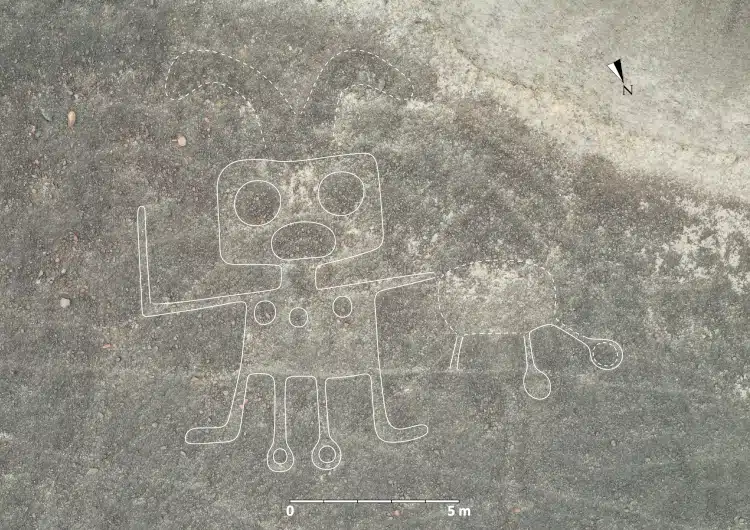
Humanoid. (Sakai et al., PNAS, 2024)
The enigmatic Nazca lines have long fascinated archeologists and the general public. These figurative geoglyphs or drawings have been long attributed to the Nazca people, a civilization that lived in the area of southwestern Peru from 200 BCE to 700 CE. Now, a recent study published in Proceedings of the National Academy of Sciences (PNAS) has shed new light on these markings that have been designated a UNESCO World Heritage site.
The Nazca lines were first spotted in 1927. Since then, 430 of these drawings have been found. There are two types of geoglyphs—relief-type and line-type. The former are harder to spot, as they are smaller and rely on angles, light, and shadows; however, their dimensions make them more common. Relief-type glyphs mostly depict humans and domesticated animals, while the line-type glyphs are mainly of wild animals. Out of the 430 known designs, 380 are relief-type glyphs, and 50 are line-type glyphs.
The new study, led by Masato Sakai of Yamagata University in Japan has discovered a whopping 303 geoglyphs in just six months—nearly double the known number of drawings found in almost a century. These glyphs depict heads, humanoids, birds, and other animals, such as a whale holding a knife. Made by carving the ground, these glyphs have long been damaged by the elements, making them more difficult to pinpoint. Luckily, new technology has aided in the discovery and identification of said glyphs.
Sakai and his team joined forces with IBM Thomas J. Watson Research Center to develop an algorithm for identifying faint glyphs amid the rubble on the Nazca Pampa from drone images, hoping to spot something they would otherwise miss with the naked eye. In the end, 178—more than half of the 303 newly founded geoglyphs—were suggested by the AI. The algorithm excelled at picking up smaller relief-type drawings.
“The traditional method of study, which consisted of visually identifying the geoglyphs from high-resolution images of this vast area, was slow and carried the risk of overlooking some of them,” the academic told AFP. “The use of AI in research has allowed us to map the distribution of geoglyphs in a faster and more precise way.”
For all the designs that have been found throughout the years, little is known about their significance. Still, Sakai hopes to shed some light by spotlighting the placing of each of the glyphs. “The reason why the purpose of the geoglyphs’ creation remained unknown for so long is that previous researchers lacked basic information about the distribution and types of geoglyphs,” Sakai told ScienceAlert. “However, in this paper, thanks to field surveys utilizing AI and remote sensing, the distribution of the geoglyphs has been clarified. As a result, we were able to shed light on the purpose behind their creation.”
Researchers now believe that the meaning behind these glyphs is ceremonial. Particularly, the larger-line glyphs seem to be part of a pilgrimage to Cahuachi, the ceremonial center of the Nazca culture, which overlooks some of the glyphs. On the other hand, relief-type glyphs are typically located within viewing distance of informal footpaths that don’t lead anywhere specific, likely sharing information about their communal activities. “Repeatedly observing relief-type geoglyphs from the trails probably facilitated sharing information about human activities related to these scenes,” the team explains.
While there is still a lot of mystery surrounding these figures, the new unearthing of drawings and insights on their content and placing puts researchers one step closer to finally breaking the code of this decades-long enigma.
Researchers uncovered 303 new Nazca glyphs with the help of AI.
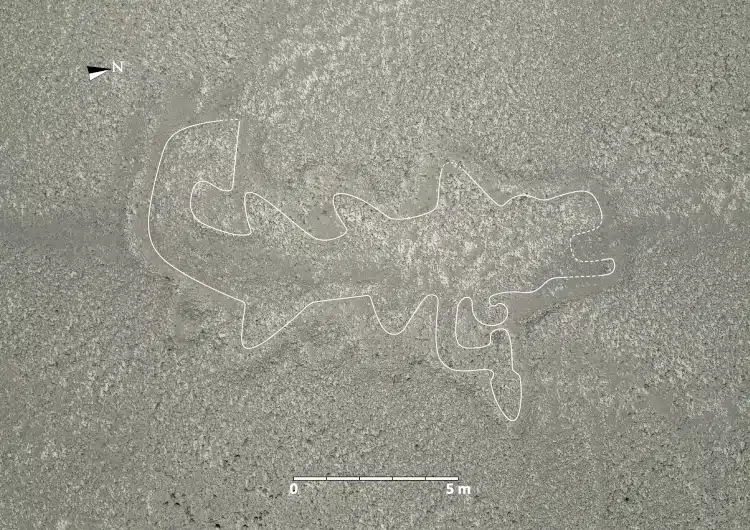
Orca with a knife. (Sakai et al., PNAS, 2024)
These figurative geoglyphs or drawings have been long attributed to the Nazca people, a civilization that lived in the area of southwestern Peru from 200 BCE to 700 CE.
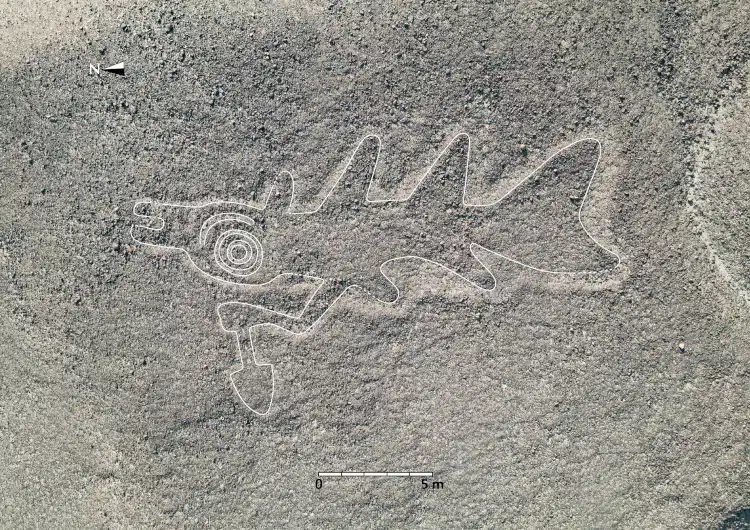
Orca with a knife. (Sakai et al., PNAS, 2024)
The Nazca lines were first spotted in 1927. Since then, 430 of these drawings were found…until now.
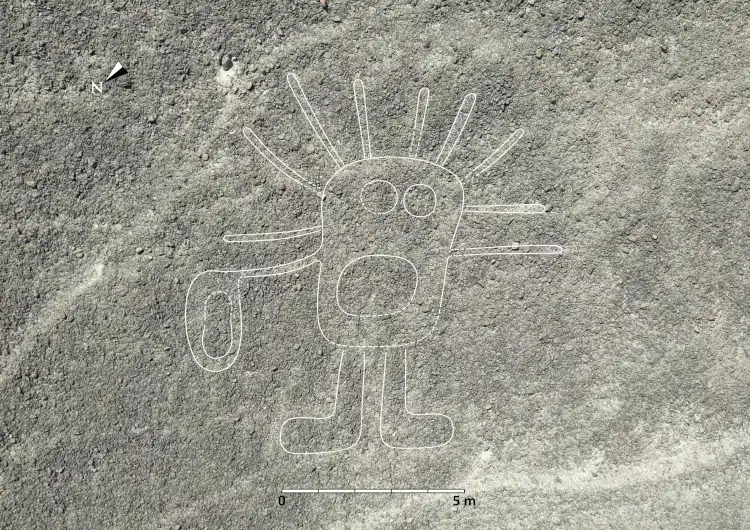
Humanoid. (Sakai et al., PNAS, 2024)
The new study, led by Masato Sakai of Yamagata University in Japan has discovered a whopping 303 additional geoglyphs in just six months.
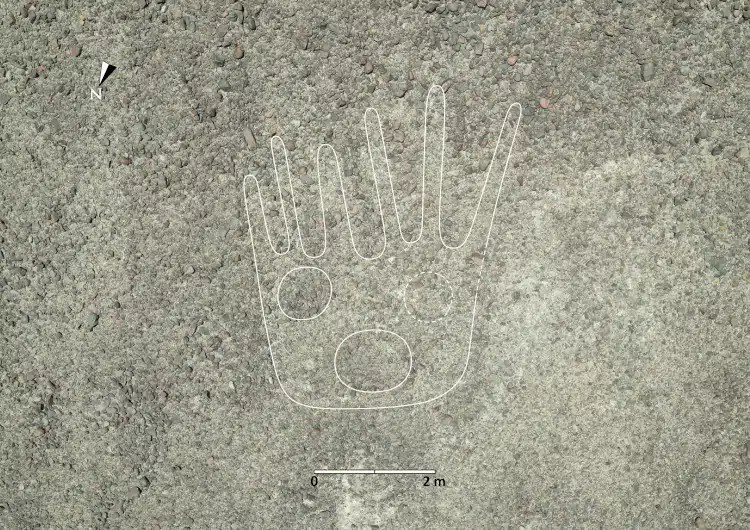
Head. (Sakai et al., PNAS, 2024)
Sakai and his team joined forces with IBM Thomas J. Watson Research Center to develop an algorithm for identifying faint glyphs amid the rubble on the Nazca Pampa from drone images.
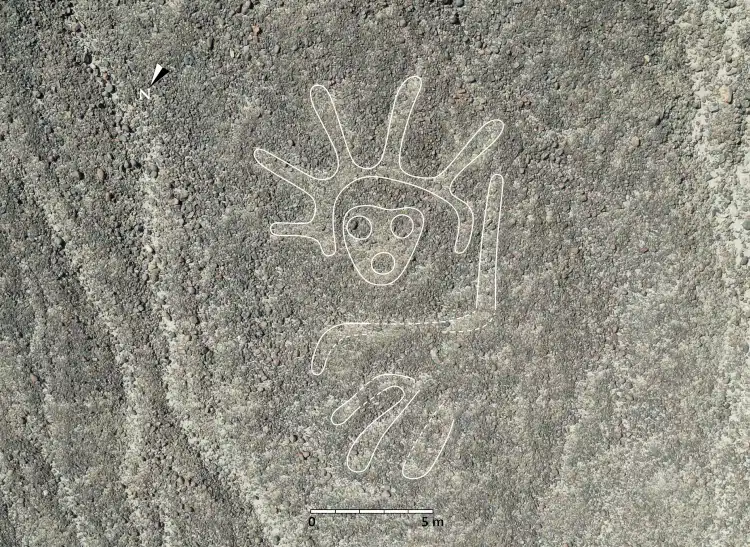
Humanoid with Headdress. (Sakai et al., PNAS, 2024)
In the end, 178–more than half of the 303 newly founded geoglyphs—were suggested by the AI.
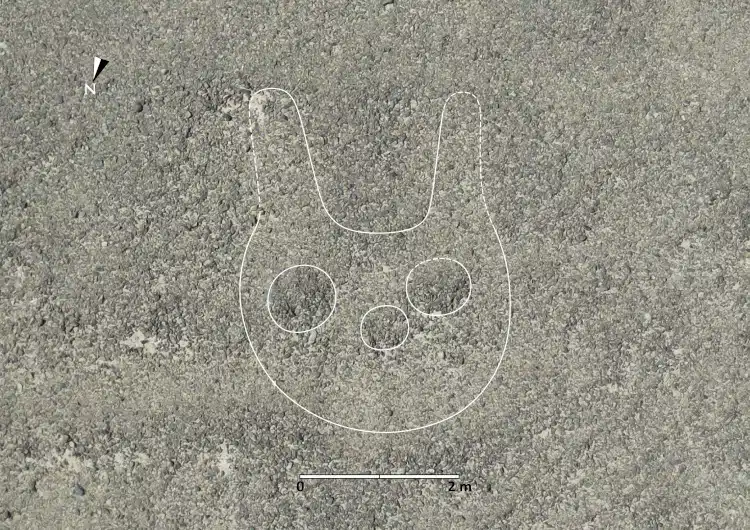
Head. (Sakai et al., PNAS, 2024)
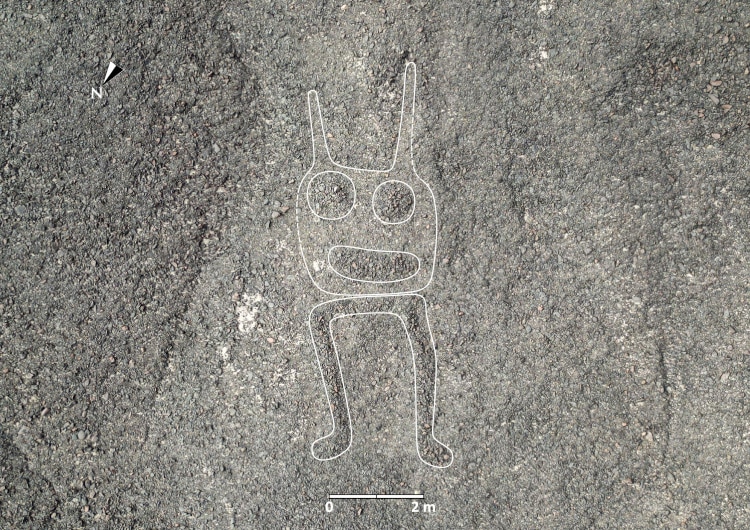
Humanoid. (Sakai et al., PNAS, 2024)
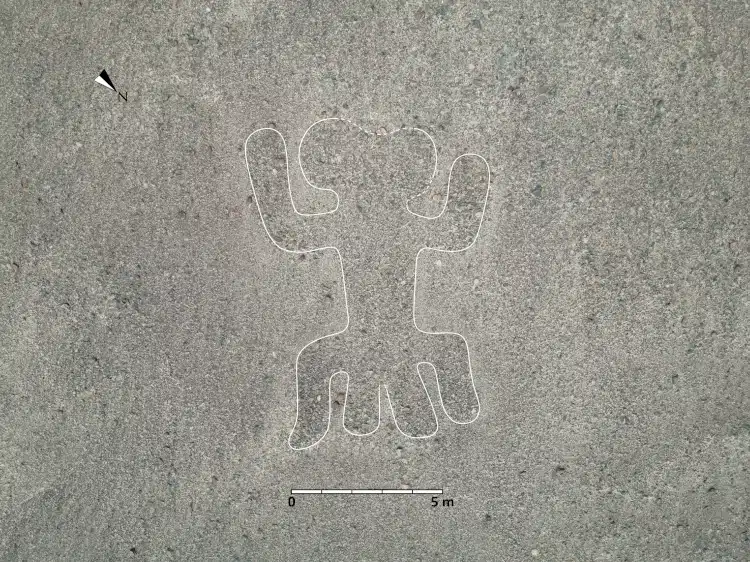
Humanoid. (Sakai et al., PNAS, 2024)

Humanoid. (Sakai et al., PNAS, 2024)
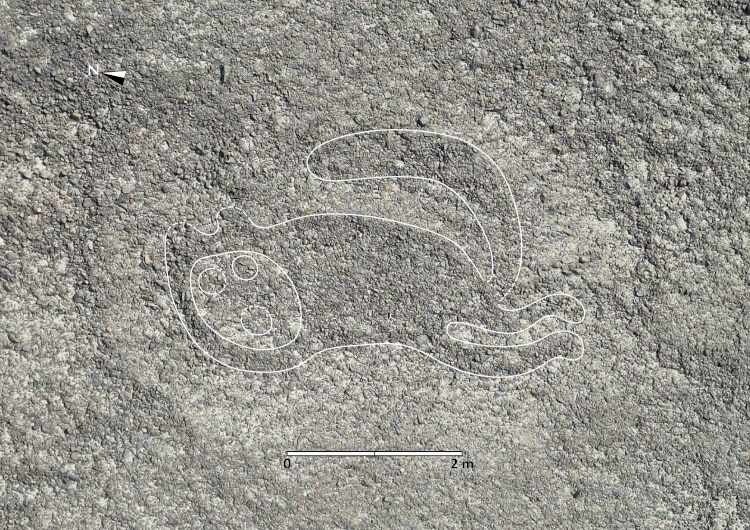
Animal. (Sakai et al., PNAS, 2024)
My Modern Met granted permission to feature photos by Masato Sakai.
Related Articles:
Giant New Nazca Lines Are Discovered in Peru Through Use of AI
168 New Geoglyphs Discovered Among the Nazca Lines in Peru
Giant 2,000-Year-Old Cat Etched Into Hillside Found at Nazca Lines Site in Peru
9,000-Year-Old Petroglyphs Reveal Early Humans Knew About Dinosaurs
